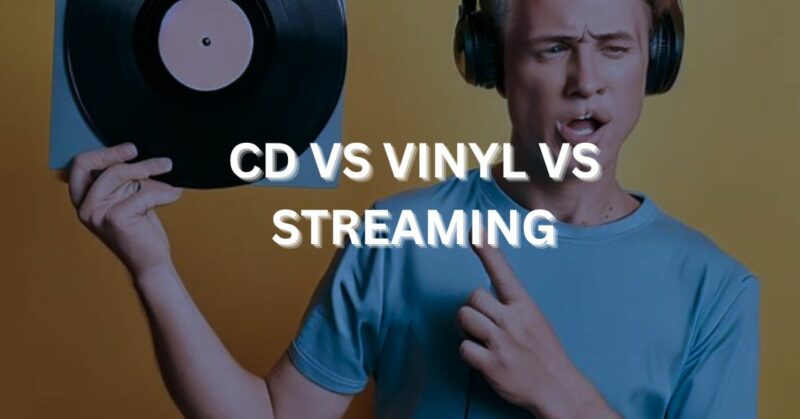In the realm of music consumption, three formats have been at the forefront of discussion and debate: CDs, vinyl records, and streaming services. Each format has its own unique characteristics, attracting different audiences and sparking passionate arguments among music enthusiasts. In this article, we will delve into the features, advantages, and drawbacks of CD, vinyl, and streaming, shedding light on their impact on the music industry and the preferences of listeners.
CD: The Digital Revolution
Compact Discs, commonly known as CDs, revolutionized the music industry in the 1980s and 1990s. They introduced digital audio, offering a more convenient and portable alternative to vinyl records. CDs provided crystal-clear sound quality, durability, and the ability to skip tracks. With the rise of CD players and affordable production costs, this format became immensely popular, dominating the market for decades.
The advantages of CDs lie in their convenience and accessibility. They are compact, lightweight, and easy to transport. Furthermore, CDs offer a tangible product that can be collected, featuring album artwork and liner notes that enhance the overall music experience. However, CDs are prone to scratches and damage, limiting their longevity compared to vinyl records.
Vinyl: The Analog Renaissance
Vinyl records, once considered a relic of the past, have experienced a remarkable resurgence in recent years. Audiophiles and music enthusiasts are drawn to the warm, authentic sound that vinyl provides. The format’s analog nature captures subtle nuances and harmonics that digital formats often struggle to replicate. The larger album artwork and physical interaction with the record have also contributed to vinyl’s appeal.
Vinyl records possess a timeless charm and collectible quality that appeals to many music lovers. The act of flipping through stacks of records and carefully placing the needle on the spinning vinyl has an intimate and nostalgic allure. However, vinyl’s drawbacks include susceptibility to scratches, warping, and deterioration with frequent use, as well as limited portability due to their size and weight.
Streaming: The Era of Access
The advent of streaming services has revolutionized music consumption in the digital age. Platforms such as Spotify, Apple Music, and Tidal offer vast libraries of music at listeners’ fingertips. Streaming eliminates the need for physical storage and allows users to discover and explore an immense range of artists and genres. The convenience of instant access, personalized playlists, and cross-device compatibility has made streaming the dominant form of music consumption today.
The key advantages of streaming lie in its convenience, affordability, and limitless options. Listeners can enjoy music on-demand, create personalized playlists, and explore new artists effortlessly. Additionally, streaming has transformed the music industry by providing independent artists with a global platform to reach audiences without traditional label support. However, streaming also raises concerns about artist compensation and the devaluation of music, as royalties can be meager, especially for emerging artists.
The debate between CD, vinyl, and streaming continues to captivate music enthusiasts worldwide. While CDs offer convenience, vinyl records appeal to those seeking a tangible and authentic experience. On the other hand, streaming services provide unparalleled accessibility and choice. The choice ultimately boils down to personal preference, with some individuals embracing the modernity of streaming while others cherish the nostalgia and aesthetic appeal of physical formats. In the end, the true winner is the music itself, regardless of the medium through which it is enjoyed.

